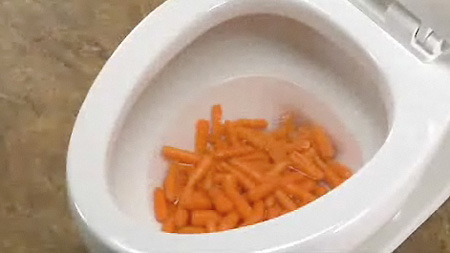Can You to Dispose of Food in the Toilet?
Can You to Dispose of Food in the Toilet?
Blog Article
They are making several good pointers about Think Twice Before Flushing Food Down Your Toilet overall in this content further down.

Introduction
Many people are frequently faced with the predicament of what to do with food waste, especially when it pertains to leftovers or scraps. One usual inquiry that occurs is whether it's alright to flush food down the bathroom. In this post, we'll look into the reasons that individuals might consider purging food, the effects of doing so, and alternative approaches for proper disposal.
Reasons that people could take into consideration flushing food
Lack of recognition
Some people might not recognize the prospective damage triggered by purging food down the toilet. They might incorrectly think that it's a harmless practice.
Comfort
Purging food down the bathroom might appear like a fast and very easy option to getting rid of unwanted scraps, particularly when there's no close-by garbage can readily available.
Idleness
Sometimes, individuals might simply pick to flush food out of large idleness, without considering the effects of their activities.
Effects of flushing food down the bathroom
Ecological effect
Food waste that ends up in rivers can add to contamination and injury aquatic environments. Furthermore, the water used to purge food can strain water sources.
Plumbing issues
Flushing food can lead to blocked pipelines and drains, creating pricey pipes repairs and aggravations.
Types of food that ought to not be purged
Fibrous foods
Foods with fibrous appearances such as celery or corn husks can get tangled in pipelines and cause clogs.
Starchy foods
Starchy foods like pasta and rice can soak up water and swell, resulting in obstructions in pipelines.
Oils and fats
Greasy foods like bacon or cooking oils should never be purged down the toilet as they can solidify and trigger obstructions.
Appropriate disposal methods for food waste
Using a waste disposal unit
For homes furnished with garbage disposals, food scraps can be ground up and flushed via the plumbing system. Nevertheless, not all foods appropriate for disposal in this fashion.
Recycling
Certain food packaging materials can be recycled, reducing waste and lessening environmental impact.
Composting
Composting is an environmentally friendly method to deal with food waste. Organic products can be composted and utilized to enrich dirt for gardening.
The importance of correct waste management
Reducing environmental harm
Correct waste management methods, such as composting and recycling, aid reduce air pollution and protect natural resources for future generations.
Shielding pipes systems
By staying clear of the practice of flushing food down the toilet, home owners can avoid expensive plumbing repair work and keep the integrity of their pipes systems.
Final thought
To conclude, while it might be alluring to purge food down the toilet for convenience, it is necessary to understand the possible repercussions of this activity. By adopting appropriate waste monitoring methods and getting rid of food waste properly, individuals can contribute to much healthier plumbing systems and a cleaner environment for all.
FLUSH FOOD DOWN THE TOILET?
FLUSHING FOOD CAN CAUSE BLOCKED DRAINS IN YOUR HOME
All of the plumbing fixtures in your home are connected to the same sewer pipe outside of your home. This outdoor sewer pipe is responsible for transporting all the wastewater from your home to the Council sewer mains. Even small pieces of food that go down the kitchen sink can cause problems for your sewer. It should therefore be obvious that flushing larger bits of food, such as meat, risks a clog in either the toilet itself or the sewer pipes. Flushing greasy food is even more problematic because oil coagulates when it cools, coating the interior lining of your pipes.
THE TOILET IS NOT A BIN
Food isn’t the only thing that people shouldn’t be flushing down the toilet. People use the toilet to dispose of all kinds of things such as tampons, makeup wipes, dental floss, kitty litter and even underwear. Water goes to great lengths to educate residents about the high costs and stress placed on wastewater treatment systems simply from people flushing the wrong stuff down the toilet. It costs taxpayers millions of dollars each year, and homeowners thousands in blocked drain repairs.
FLUSHING FOOD IS A WASTE OF WATER
Flushing food is a waste of our most precious resource - water. In June this year Level 1 water restrictions were introduced to protect water supply from drought conditions. Much of New South Wales continues to be affected by prolonged drought with recent figures revealing up to 97 per cent of the state remains in drought. Depending on whether you have a single or dual flush toilet, every single flush uses between five and 11 litres of water. In the current climate this is a huge amount of water to be wasting on flushing food that should be placed in the bin (or better yet, the compost).
https://www.jabplumbingsolutions.com.au/blog/can-you-flush-food-down-the-toilet

I am very focused on Is it safe to flush food (especially rice) down the toilet? and I hope you enjoyed the post. If you appreciated our blog posting kindly consider to share it. We value reading our article about Think Twice Before Flushing Food Down Your Toilet.
About This Report this page